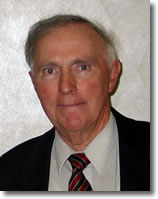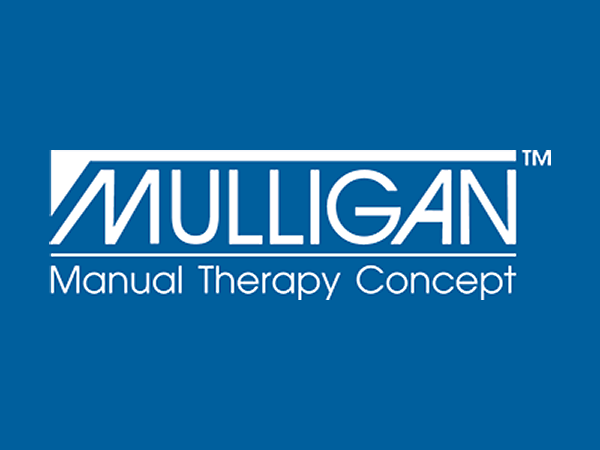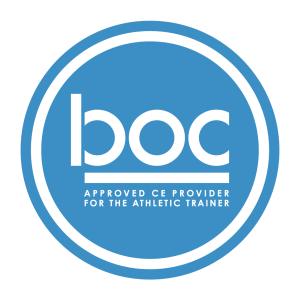The Mulligan Concept
About
The Mulligan Concept is a unique approach to manual therapy discovered and developed by Brian Mulligan F.N.Z.S.P. (Hon), Dip. M.T. from Wellington, New Zealand. This simple yet effective manual approach addresses musculoskeletal disorders with pain free manual joint “repositioning” techniques for restoration of function and abolition of pain.
The efficacy of this approach can be quickly and easily ascertained in clinic. MWM (Mobilization with Movement) skills will be learned and it is an expectation of this course that those therapists with a normal caseload will find an immediate improvement in outcome measures with patients with restricted and/or painful movement.
MULLIGAN CONCEPT MANUAL THERAPY COURSES:
UPPER QUARTER
LOWER QUARTER
ADVANCED COURSES
These two-day manual therapy courses offer a new and simple approach in manual therapy which has been developed by Brian Mulligan, F.N.Z.S.P., Dip. M.T. The courses cover the application of mobilizations with movements (MWM’s) as it applies to the cervical and upper thoracic spine and upper extremities or lower quadrant extremity and spinal joint dysfunction. These courses are designed for health care professionals licensed to perform joint mobilizations who wish to broaden their existing manual therapy skills for use within their defined scope of practice.
This course will enable participants to learn the indications for this new and simple approach to manual therapy in clinical practice. Past Mulligan course feedback has indicated the need for a more detailed presentation of techniques along with the development of clinical reasoning skills. This seminar is designed to meet those needs.
Completing these three courses along with the CMP Exam will lead to qualifications as a Certified Mulligan Practitioner (CMP).
Mulligan Concept (MCTA) Online Bundle
Brian Mulligan’s concept of mobilizations with movement (MWMS) in the extremities and sustained natural apophyseal glides (SNAGS) in the spine are the logical continuance of this evolution with the concurrent application of both therapist applied accessory and patient-generated active physiological movements.
Brian and six of his original USA MCTA teachers will guide you through the specific application of MWM and SNAGS in clinical practice, the following basic principles that have been developed:
- During the assessment, the therapist will identify one or more comparable signs as described by Maitland. These signs may be a loss of joint movement, pain associated with movement, or pain associated with specific functional activities (i.e., lateral elbow pain with resisted wrist extension, adverse neural tension).
- A passive accessory joint mobilization is applied following the principles of Kaltenborn (i.e., parallel or perpendicular to the joint plane). This accessory glide must itself be pain-free.
- The therapist must continuously monitor the patient’s reaction to ensure no pain is recreated. Utilizing his/her knowledge of joint arthrology, a well-developed sense of tissue tension and clinical reasoning, the therapist investigates various combinations of parallel or perpendicular glides to find the correct treatment plane and grade of movement.
- While sustaining the accessory glide, the patient is requested to perform the comparable sign. The comparable sign should now be significantly improved (i.e., increased range of motion, and a significantly decreased or better yet, absence of the original pain).
- Failure to improve the comparable sign would indicate that the therapist has not found the correct contact point, treatment plane, grade or direction of mobilization, spinal segment or that the technique is not indicated.
- The previously restricted and/or painful motion or activity is repeated by the patient while the therapist continues to maintain the appropriate accessory glide. Further gains are expected with repetition during a treatment session typically involving three sets of ten repetitions.
- Further gains may be realized through the application of passive over-pressure at the
- end of the available range. It is expected that this over-pressure is again, pain-free.
LOWER QUARTER SCHEDULE:
September 28-29, 2024 - Miami, FL
October 12-13, 2024 - Fremont, CA
Who is it for?
The Mulligan Concept courses are designed for licensed health care practitioners including PT, MD, DO, DC, PTA, OT, CHT and AT. The techniques are for use within the individual’s scope of practice.
HOST A MULLIGAN COURSE at your clinic/facility (private or open to the public) – Email us
Mulligan Concept Online Library
(VALUE: $159) – one year subscription
All video’s include Brian Mulligan F.N.Z.S.P. (Hon), Dip. M.T. from Wellington, New Zealand who discovered and developed The Mulligan Concept approach to manual therapy.
ONLINE LIBRARY INCLUDES:
Introduction to the Mulligan Concept with Brian Mulligan, Rick Crowell and Brian Folk
Mulligan Concept: Cervical / Upper Cervical Spine with Brian Mulligan and Frank Gargano
Mulligan Concept: Lumbar Spine, Sacroiliac Joint, and Hip with Brian Mulligan and David Mikos
Mulligan Concept: Hand, Wrist and Elbow with Brian Mulligan and Don Reordan
Mulligan Concept: Shoulder / Thoracic / Spinal Mobilization with Arm Movement with Brian Mulligan, Rick Crowell and Brian Folk
Mulligan Concept: Foot, Ankle & Knee with Brian Mulligan and Julie Paolino
Mulligan Concept: Canine Applications with Brian Mulligan and Deb Gross Torraca
Certifications
- Approved for 13 CE hours for PTs and PTAs covering the following states AL, AR, CT, DE, HI, ID, IN, IA, KS, KY, ME, MA, MI, MT, NE, NH, NY, NC, ND, OR, SC, SD, UT, VT, WA, WI, WY
- Northeast Seminars (BOC AP#P498) is approved by the Board of Certification, Inc. to provide continuing education to Athletic Trainers. This program is eligible for a maximum of 13 Category A hours/CEUs. ATs should claim only those hours actually spent in the educational program.
- Certificate of attendance is provided for Continuing Education (CE) credits, 13 hours




